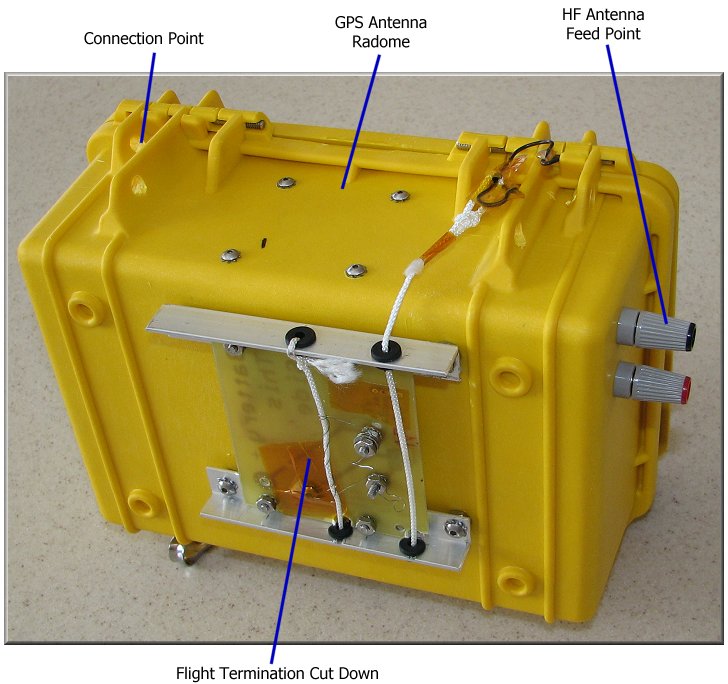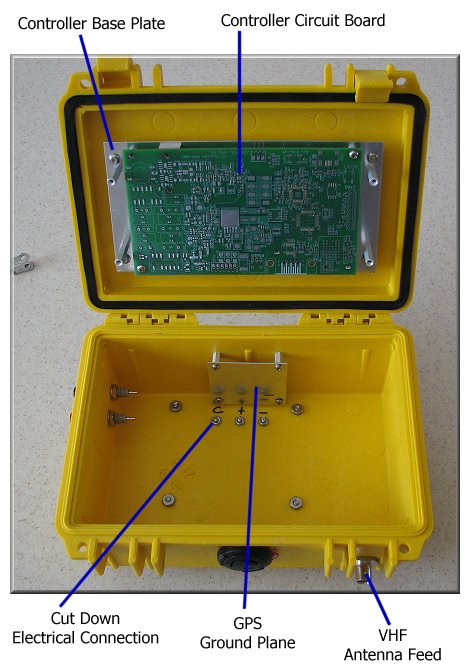


|
|
   |
|
|
|
Mechanical The ANSR-33 flight that flew on 29 December 2006 and into 30 December was never recovered. Because of the single HF band of operation, propagation was lost soon after sunset. A position message was received a couple times in the early morning hours before contact was completely loss. Weather radar showed the balloon and payload flying into an area of rain showers. The payload mechanical design was a rugged, but non-water proof design of aluminum channel and foam core board. In order to improve the odds of recovery over a long distance, the payload enclosure has been redesigned. The enclosure is standard Pelican 1120 case with minor modifications. Additional holes have been added to the case ribs for connection to the payload string. The GPS antenna is housed within the case. The Pelican case material offers little attenuation to the GPS signal. The flight termination cut down circuit is attached to the outside of the payload. It is a piece of Nichrome wire around the balloon connection string. When flight termination is desired, power is applied to the wire. The red hot wire melts the nylon string to release the balloon. Because of the heat and smoke generated by the wire and string, it is mounted external to the payload electronics. Two binding posts provide connection to the center fed, trapped dipole HF antenna.  Pelican 1120 Case with modifications The inside of the enclosure contains the controller PCB (Printed Circuit Board). The board is mounted on an aluminum base plate to dissipate the heat of the HF PA (Power Amplifier) during operation at high altitude. Feed through's provide a water tight electrical connection to the external cut down circuit. The empty weight of the Pelican case is 18 ounces. With the addition of the cut down mechanism, printed circuit board, and 3 battery packs composed of eight L91 AA cells, weight increases to a little under 2½ pounds.  Internal Connections |
|
Copyright © 2001-2009, KD7LMO |
|
Web space provided by ESS, Inc. for all your consulting needs. |